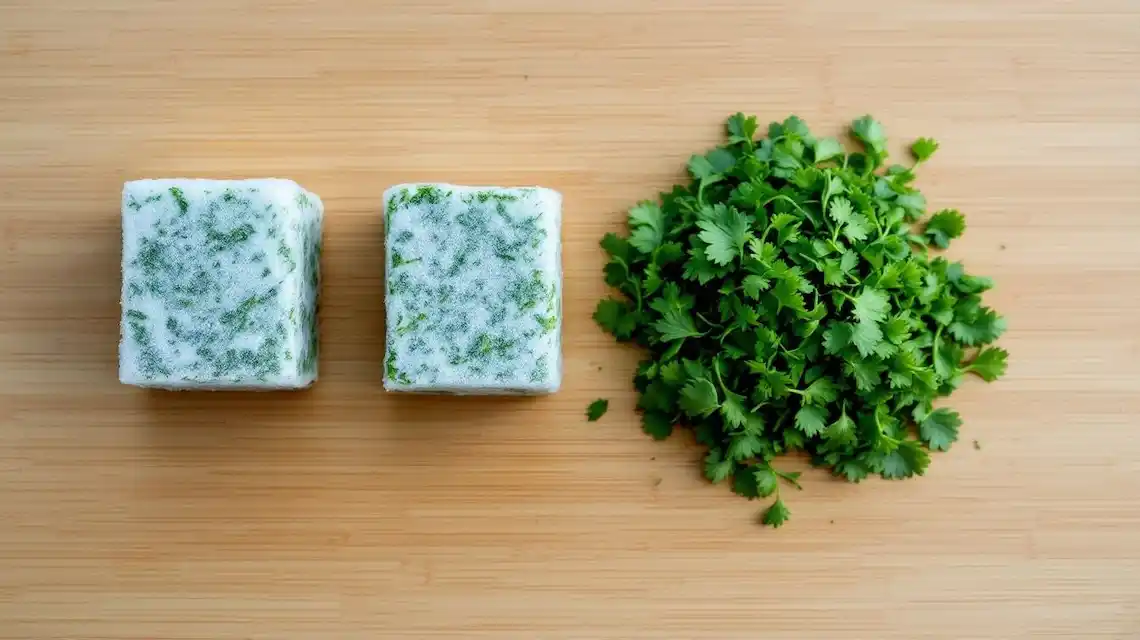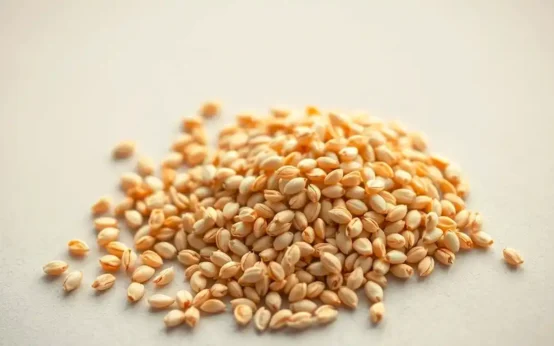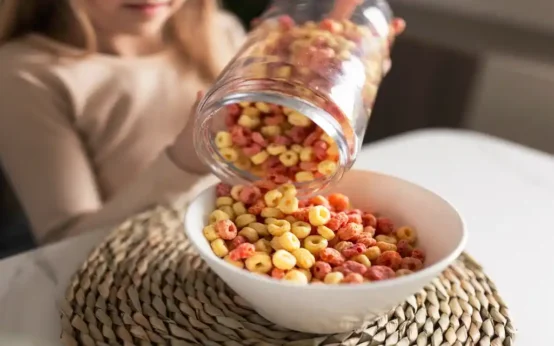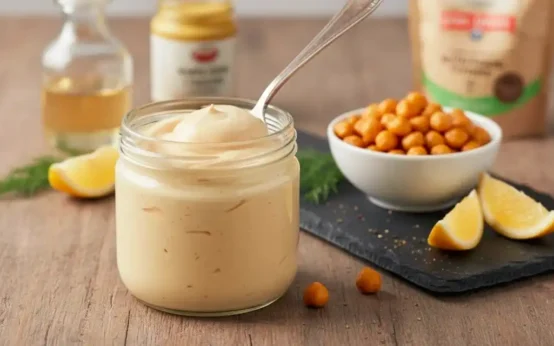Fresh herbs bring meals to life, but they often go bad before you use them all. So, can you chop and freeze fresh herbs? Yes, you absolutely can, and it’s a smart way to keep their flavor handy for months. Freezing helps lock in taste, prevents waste, and even saves money since you won’t be tossing out wilted bunches.
If you love using herbs year-round, freezing is one of the easiest, most effective tricks. You’ll find out which herbs freeze best, how to prep them, and the top storage tips to keep them fresh. You’ll also get ideas for adding that bright, garden-fresh flavor to meals long after summer ends. For anyone who values practical kitchen hacks or wants to boost everyday vitality with more herbs, this guide has you covered. If you’re curious about getting the most from your herbs, check out these best herbs for daily wellness.
Why Freeze Fresh Herbs?
Freezing fresh herbs is a simple way to solve a common kitchen problem: how to keep delicate green sprigs flavorful and ready for action long after you first bring them home. If you’ve ever tossed out limp parsley or wilted basil, you know the frustration of wasted money and lost flavor. But when you chop and freeze fresh herbs, you get more flexibility with your cooking and make every dollar count. Let’s break down all the practical benefits of freezing herbs and why this trick has become a real lifesaver for so many home cooks.
Extending Shelf Life and Cutting Down Food Waste
Fresh herbs are notorious for going bad quickly. Give them just a week in the fridge and most become sad and soggy. When you chop and freeze fresh herbs, you lock in their peak freshness for months.
- Reduces spoilage: Save money and avoid the guilt of watching parsley, cilantro, or dill wither away.
- Less frequent trips to the store: Keep your favorite herbs always at hand for the next recipe.
- Easier portion control: Freeze in small batches or even ice cube trays, then grab exactly what you need.
Think about how often you buy a huge bunch of basil or cilantro but only need a few sprigs. Freezing what you don’t use right away keeps the rest usable and bright until your next meal.
Maximum Flavor, Minimum Effort
Freezing protects the essential oils that give herbs like basil, chives, and dill their unique flavors. With this method, flavor doesn’t fade the way it does with dried herbs. Most herbs, especially soft leafy types, keep their punch much better when frozen than when left to dry.
- Retains natural oils and aroma
- Brings a taste of summer to winter dishes
- Promotes faster meal prep since there’s no chopping required when you’re ready to cook
Herbs Ready When You Need Them
One of the biggest perks is sheer convenience. Want to whip up a quick chimichurri, homemade salad dressing, or a fresh-tasting soup? Reach into your freezer and toss in the chopped parsley or dill—no defrosting needed for most recipes.
Popular herbs people freeze include:
- Basil: Great for pesto, pasta, and tomato sauces.
- Parsley: Blends into dressings, marinades, and soups.
- Cilantro: Perfect for salsas, curries, and rice bowls.
- Chives: Adds instant mild onion flavor to eggs, potatoes, and dips.
- Dill: Tastes fresh in seafood, potato dishes, and yogurt sauces.
Each of these herbs can elevate a dish, and freezing makes them just a scoop away. You’ll never have to skip a recipe because you’re out of a key fresh herb.
Easier, More Flavorful Home Cooking
Freezing herbs takes the stress out of everyday meal prep and inspires more home cooking. Instead of settling for dried flakes, you’ll have fresh, green flavor always ready—no matter the season.
- Boosts your weekly meal plan options
- Encourages creativity with new recipes
- Supports consistent healthy eating
Want to get even more organized in the kitchen? See these healthy weekly meal plan ideas for inspiration.
Chopping and freezing fresh herbs is a small change that leads to tastier food, less waste, and easier kitchens everywhere.
How To Chop and Freeze Fresh Herbs
Learning how to chop and freeze fresh herbs is the secret to quick, flavorful meals all year. You don’t need fancy gadgets or a chef’s touch to make it happen. Prepping herbs this way keeps flavor strong, makes meal prep fast, and ensures you always have what you need on hand. Here’s a detailed, step-by-step guide for turning fresh herbs into long-lasting kitchen staples.
Step 1: Wash and Dry Your Herbs
Start by rinsing fresh herbs under cool running water to get rid of dirt and bugs. Shake off the excess water and spread them on a clean kitchen towel or paper towels. Gently pat the herbs dry. Any extra moisture can lead to freezer burn or frost, so make sure the leaves are as dry as possible before you move on.
Step 2: Remove Stems and Chop
Next, remove any thick stems. For herbs like parsley or cilantro, pinch the leafy tops and discard tough stems. Soft-leaf herbs like basil, mint, or dill benefit from a rough chop, making them easier to use straight from the freezer. If you love a certain size for sauces or soups, chop the herbs to fit your usual recipes.
- For woody herbs (like rosemary, thyme, or oregano), strip the leaves from stems and chop as needed.
- For soft herbs (such as basil, cilantro, parsley, and chives), chop leaves to your desired fineness.
Step 3: Choose a Freezing Method
Now for the fun part: picking how you want to freeze. Some methods work better for certain herbs or kitchen routines. Let’s run through the best options.
Freezing Herbs in Ice Cube Trays
This method is quick and great for recipes that use oil or water.
- Distribute chopped herbs evenly in each tray section (about one to two tablespoons).
- Cover the herbs with water or olive oil. Oil helps preserve color and flavor.
- Freeze until solid, then pop cubes out and store in freezer bags or containers.
These handle heat well, making them perfect for adding straight to soups, stews, or sautés.
Freezing Herbs Flat in Bags
If you want to keep things simple, try this classic approach.
- Spread chopped herbs thinly on a parchment-lined baking sheet.
- Flash freeze for an hour or two, just until solid.
- Transfer frozen herbs to labeled freezer bags. Press out as much air as possible before sealing.
This method keeps the herbs loose, so you can scoop out what you need for salads, omelets, or dressings.
Storage Table: Timing and Methods
| Herb Type | Best Freezing Method | Storage Life | Notes |
|---|---|---|---|
| Basil, Parsley | Ice cube tray with oil/water | 3-6 months | Oil helps keep green color |
| Chives, Dill | Flat in bags | 3-6 months | Great loose for sprinkling |
| Thyme, Rosemary | Flat in bags or whole stems | 4-6 months | Hardy herbs, strip as needed |
Which Herbs Freeze Best?
Not every herb freezes with equal results, but most leafy or hardy types hold up well:
- Best for freezing chopped: Parsley, cilantro, basil, dill, chives, mint.
- Hardy herbs also do well: Rosemary, thyme, oregano, sage.
- Delicate herbs: Basil may darken, but oil helps keep it green. Cilantro and parsley freeze best when used soon after chopping and freezing.
Tips for Maintaining Flavor and Color
- Use oil for sensitive herbs (like basil) to seal in color and taste.
- Don’t let extra moisture into the bags—press out as much air as you can.
- Label everything with the freeze date and type of herb, so nothing goes to waste at the back of the freezer.
- Most frozen herbs work best in cooked dishes, as their texture softens after thawing.
Want more ideas to make weeknight meals quick and healthy? For plant-based inspiration and herb-focused flavor combos, try these vegan recipes to make at home.
A Few Notes on Texture and Taste
While the answer to “can you chop and freeze fresh herbs” is a clear yes, it’s smart to know they won’t come out exactly like fresh from the garden. Most lose a bit of their fresh snap and may look wilted once thawed. This doesn’t affect flavor for cooked dishes, but skip using frozen herbs as a garnish on cold salads.
Frozen herbs shine in recipes where their taste takes the lead—think blended dressings, simmered sauces, brothy soups, and anything that calls for a flavor burst without the crunch of fresh greens.
Using Chopped and Frozen Herbs in Cooking
Frozen herbs can transform weeknight meals, save time, and help avoid waste. If you’ve ever wondered if you can chop and freeze fresh herbs and actually expect flavorful dishes, the answer is yes. But the key is knowing when and how to add them while cooking. Here’s a look at the best ways to use those vibrant, frozen herbs you saved for just the right meal.
The Best Dishes for Frozen Herbs
Frozen herbs shine most when they’re heated or blended, since freezing makes them softer and sometimes less crisp. They’re perfect for dishes where bold taste matters more than a fresh, leafy look. Drop them in early so their flavor can infuse the dish as it cooks.
Try frozen herbs in:
- Soups and stews (add a handful of parsley, dill, or cilantro straight from the freezer)
- Chili and braised dishes
- Tomato or cream-based sauces (stir in basil, oregano, or thyme while simmering)
- Egg bakes, omelets, and frittatas
- Grain bowls, stir-fries, or fried rice
For blended sauces (like pesto), frozen basil works well. Just thaw it with a bit of oil and blend. You can even use frozen chives or parsley directly in homemade salad dressing—whip them with oil, vinegar, and your favorite spices.
Timing: When to Add Frozen Herbs
For maximum flavor, drop frozen herbs into your recipe at the right stage. Unlike fresh, frozen herbs release their flavor quickly as they thaw in hot foods, so add them a bit earlier than you would finely chopped fresh greens.
- During sautéing: Mix into onions, garlic, and veggies early in the pan.
- When simmering: Drop cubes or loose herbs in while soups or sauces are bubbling.
- With marinades and dressings: Thaw and stir in, or blend for smoother dressings and dips.
Avoid using frozen herbs as a garnish on cold foods or salads. The texture softens and they may look a bit wilted compared to fresh.
Flavor and Texture Tips
Frozen herbs have a softer feel and sometimes a deeper taste. The oils are trapped and then released as the herbs thaw, bringing intense flavor, but not the same crispness.
What you might notice:
- Softer leaves: Great for cooked foods, not for a final sprinkle.
- Milder color: Basil may darken; parsley and cilantro hold their green better.
- Big flavor: Often stronger than their dried counterparts in cooked recipes.
If your recipe calls for fresh herbs on top of a dish, frozen may not deliver the same “pop” but will shine in the base of your meal.
Measuring and Using Frozen Herbs
It’s easy to swap frozen herbs into recipes, but there are a few tricks for the right proportions:
- If using loose herbs: Substitute 1 tablespoon of frozen for every tablespoon of fresh.
- If using cubes: One standard ice cube is about 2 tablespoons of chopped herb and oil or water. Drop cubes directly into hot dishes.
- For seasoning: Taste and adjust. Freezing sometimes heightens or mellows flavors depending on the herb.
Here’s a simple table for quick measuring:
| Fresh Herbs Needed | Use This Amount Frozen |
|---|---|
| 1 tablespoon | 1 tablespoon |
| 1/4 cup | 1/4 cup |
| 1 ice cube | Approx. 2 tablespoons |
Frozen herbs make meal prep less stressful. You get home from work, pop a handful of frozen parsley into a quick soup, or blend thawed basil into an easy sauce—no chopping, no wilted bunches on the counter.
Quick Meal Ideas to Try with Frozen Herbs
For inspiration, swap in frozen herbs in these easy dishes:
- Eggs: Add frozen chives to scrambled eggs or folded omelets.
- Hearty soups: Stir parsley or dill cubes into chicken vegetable soup.
- Weeknight sauces: Simmer chopped basil in tomato sauce or frozen cilantro in salsa.
- Salad dressings: Blend thawed parsley with olive oil and lemon for a zesty dressing.
- Whole grains: Finish a hot pot of quinoa or brown rice with a spoonful of frozen herbs right before serving.
Using frozen herbs is a smart way to boost meals with less effort, and it works hand-in-hand with fast, nutritious routines like these quick healthy breakfasts under 15 minutes. It’s all about keeping flavor at your fingertips, no matter the season.
Other Herb Preservation Methods
While you can chop and freeze fresh herbs and get great results, it’s not the only way to make your harvest or grocery-store bundles last. Depending on your kitchen routine, cooking style, and space, you might consider other time-tested preservation techniques. Here’s a quick look at how drying, refrigerating, and storing herbs in oil compare to freezing, so you can pick the best option for you.
Drying Herbs
Drying is the go-to method for making herbs shelf-stable for months. This technique works especially well for hardy herbs like rosemary, oregano, thyme, and sage.
- Pros of Drying:
- No need for freezer space or electricity.
- Dried herbs last the longest—often a year or more.
- Super convenient for adding to recipes (just crumble and go).
- Cons of Drying:
- Some leafy herbs (like basil or parsley) lose most of their bright flavor.
- Texture and color change—dried herbs won’t look or taste fresh.
- Not as good for soft-leaf herbs that are best used fresh or frozen.
Best for: Anyone who likes to blend their own spice mixes, use herbs in roasting, or wants a pantry-stable solution.
Refrigerating Fresh Herbs
If you’re using herbs within a week, refrigeration may be all you need. Most soft, leafy herbs (cilantro, dill, basil) won’t last long at room temperature.
How to store in the fridge:
- Trim stems and place bunches in a glass of water, loosely cover with a plastic bag.
- Wrap in a damp paper towel and keep in a zip-top bag for a few days.
- Pros of Refrigeration:
- Quick and no fuss.
- Preserves fresh look and taste—short-term.
- Easy for garnishing and salads.
- Cons of Refrigeration:
- Herbs spoil fast, especially softer varieties.
- Not a solution for long-term storage.
- Takes up valuable fridge space.
Best for: Home cooks who plan to use up herbs quickly and love fresh garnishes.
Preserving Herbs in Oil
Some people like to store chopped herbs in oil for rich flavor and fast prep. You can spoon fresh basil, oregano, rosemary, or thyme into a jar with olive oil and keep it in the fridge or freezer.
- Pros of Storing in Oil:
- Maintains bright color and delivers bold flavor, especially for pesto or marinades.
- Easy to scoop out for sautés, dressings, or roasted veggies.
- Cons of Storing in Oil:
- Risk of food safety problems (botulism) if stored at room temperature—always refrigerate or freeze.
- Can be high in fat content if you’re watching your intake.
- Not ideal for all herbs or recipes.
Best for: Adding straight into dishes that benefit from an oil infusion, or when you make homemade salad dressings and pestos.
When to Freeze vs. Use Other Methods
Freezing stands out if flavor is your top priority and if you want to stretch the shelf life of soft herbs like basil, parsley, dill, and chives. It’s the best option for most home kitchens because:
- It preserves fresh flavor better than drying.
- It’s fast—just chop, portion, and freeze.
- Frozen herbs are easy to add to hot dishes without extra steps.
Choose drying for hardy herbs or pantry storage, without worrying about freezer space. Go for refrigeration to keep a bunch fresh for salads or short-term use. If you use a lot of oil-based sauces or dressings, storing in oil could be for you.
Here’s a quick way to compare:
| Preservation Method | Best For | Flavor Strength | Storage Life | Ideal Herbs |
|---|---|---|---|---|
| Freezing | Year-round cooking | High | 3-6 months | Basil, parsley, chives |
| Drying | Spice blends | Medium to low | 6-12 months | Oregano, rosemary, mint |
| Refrigeration | Short-term fresh use | Highest | 3-7 days | Cilantro, dill, parsley |
| Storing in Oil | Rich sauces | Very high | 1-2 months* | Basil, thyme, rosemary |
*Store in oil in the fridge or freezer only.
Choosing the right method depends on your storage space, which herbs you use most, and how you like to cook. Many home cooks use a mix—freezing what they can, drying extra for spice jars, and keeping a fresh bunch handy. No matter which option you choose, you’ll get more from your herbs and waste less. And if you’re exploring new ways to eat healthy at home, using up preserved herbs can inspire new recipes and habits.
Conclusion
Chopping and freezing fresh herbs is a simple way to cut waste and keep fresh flavor ready for every meal. By freezing herbs, you make the most of each bunch, save money, and always have a dash of green at your fingertips. Try it out with your next batch of basil, parsley, or chives, and see how easy it is to boost weeknight dinners and homemade sauces.
Always label frozen herbs with the date and type so nothing gets lost in the freezer shuffle. If you have tips of your own or questions about freezing herbs, please share them in the comments. Your fresh ideas help everyone get more from their kitchen. Thanks for reading!
FAQ: Can You Chop and Freeze Fresh Herbs
Can you freeze all kinds of fresh herbs?
You can freeze most herbs like parsley, cilantro, dill, basil, chives, oregano, and thyme. Some herbs, such as basil and mint, may darken or lose a bit of flavor when frozen, but they’ll still work in cooked dishes.
Should I chop herbs before freezing?
Chopping herbs before freezing saves time later and makes them easy to use straight from the freezer. Rinse, dry, and then chop the leaves before packing.
What’s the best way to freeze chopped herbs?
Place chopped herbs in airtight containers or freezer bags. Squeeze out as much air as you can. You can also portion them into ice cube trays, cover with water or oil, freeze, then transfer the cubes to bags.
Do frozen herbs taste the same as fresh?
Frozen herbs keep their flavor for most cooked recipes. They may lose some texture and color. They’re best for soups, stews, and sauces rather than using as garnishes.
How long can you store frozen herbs?
Frozen herbs stay good for three to six months. For best aroma, use them within this time frame. They are still safe to eat after six months, but their taste may fade.
Should I freeze whole sprigs or just the leaves?
Freeze just the leaves for herbs with woody stems, like thyme and rosemary. For tender herbs like parsley or cilantro, chop and freeze the leaves and tender stems.
Can you freeze herbs in oil?
Yes, freezing herbs in oil works well, especially for basil, oregano, or rosemary. Portion chopped herbs into ice cube trays, cover with a neutral oil, freeze, then store cubes in freezer bags for ready use.
Do I need to blanch herbs before freezing?
Blanching herbs helps preserve color and flavor but isn’t always needed. Hardier herbs like rosemary and thyme freeze fine without blanching. Tender herbs like basil do better if blanched for a few seconds before freezing.
Can I use frozen herbs in salads or as a garnish?
Frozen herbs get limp once thawed, so they’re not the best choice for salads or fresh garnishes. Use them in cooked dishes instead.
Are frozen herbs as healthy as fresh?
Frozen herbs keep most of their nutrients, though there may be slight vitamin loss over time. They’re still a healthy and easy way to add flavor to your meals.



 Health Benefit of Sesame Seed
Health Benefit of Sesame Seed  Healthiest Breakfast Cereal for Children
Healthiest Breakfast Cereal for Children  Vegan Oil Free Mayonnaise Recipe
Vegan Oil Free Mayonnaise Recipe  Nutrition to Enhance Athletic Performance
Nutrition to Enhance Athletic Performance  Tasty Healthy Low Cost Meals Recipes
Tasty Healthy Low Cost Meals Recipes  Gluten Free Food Options
Gluten Free Food Options